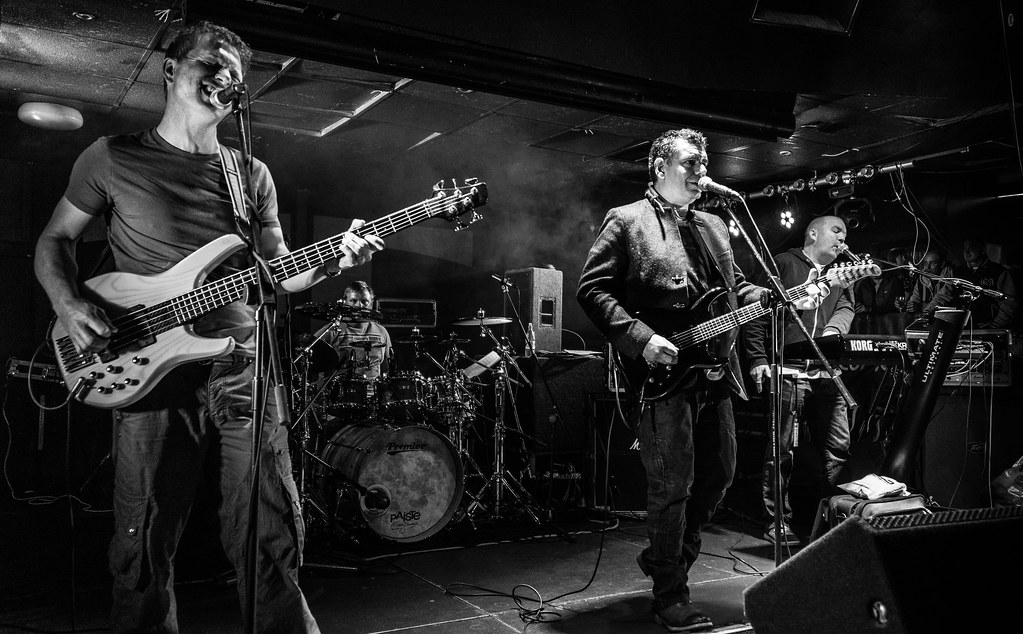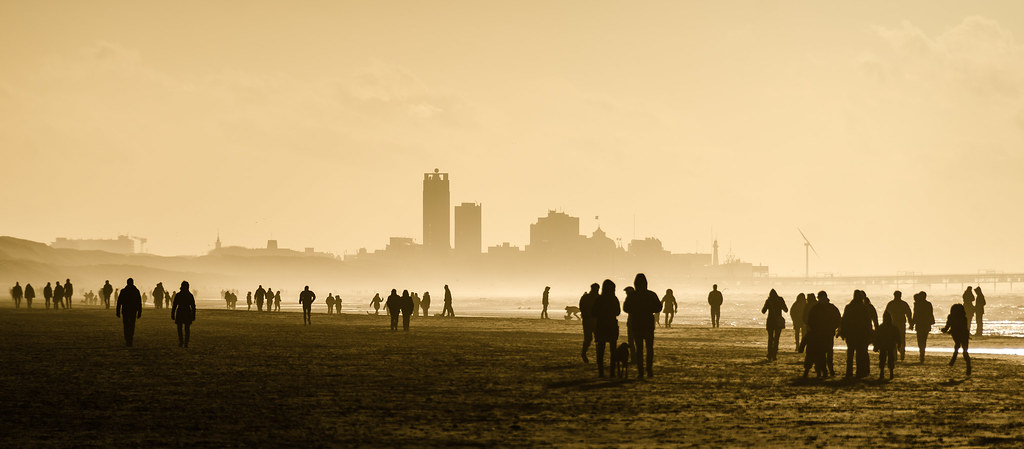Mark McCaughrean is the Senior Science Advisor in the Directorate of Science & Robotic Exploration at the European Space Agency, home to all of ESA's space astronomy and solar system missions.
He and his team currently have spacecraft working at Venus, Mars, Saturn, and around the Earth, as well as looking at the Sun. They are also building new missions to Mercury, Mars, and Jupiter's icy moons, as well as new space telescopes some of which, will be searching for Earth-like planets in orbit around nearby stars. Their most recent launch was the Gaia Milky Way surveyor, operating 1.5 million kilometers from Earth since last December.
We have spoken to Mark to get to know more about his work, his photography, as well as Rosetta, the ESA's comet-chasing mission, which finally meets up with Comet 67P/Churyumov-Gerasimenko today!
Tell us a bit about yourself.
I’m an infrared astrophysicist, interested in the formation and evolution of stars and their planetary systems. I studied at the University of Edinburgh in Scotland, but since then have worked professionally at NASA’s Goddard Space Flight Centre, then in Tucson, Heidelberg, Bonn, and Potsdam. I’ve been using some of the biggest telescopes in Hawaii, Chile, and Arizona to observe the sky, and one of the high points of my work was using the Hubble Space Telescope with Bob O’Dell to take the first unambiguous images of protoplanetary disks orbiting around young stars in the Orion Nebula, a region I’ve studied a lot during my career.
I then taught as a professor of astrophysics at the University of Exeter for five years, before joining the European Space Agency in Noordwijk in 2009.
What was your inspiration for becoming an astrophysicist?
As a kid of the 1960s, it was a mixture of wanting to be an astronaut, of loving science fiction, and being very curious about the world that surrounded me, on all scales. I had a very inspirational primary school teacher, Chris Norris, at a little school in rural West Sussex in England. Although he wasn’t a scientist himself, he encouraged us to always look beyond and see what lay under the surface. Literally on one occasion, when he took some of us kids down the road from where I lived and into a field, where we proceeded to dig up a recently-discovered Roman road.
Later, as science became a more formal track at school, I was lucky enough to win a scholarship from the Royal Air Force to learn to fly, even before I could drive. Joining that with astronomy seemed the right thing to do to get to be an astronaut.
I continued to fly with the RAF while studying astrophysics at Edinburgh University, but quite quickly realised that I probably wasn’t cut out for military life, was much more a scientist, and besides, since the UK didn’t have any astronauts then, how big were my chances? So I went on to do a PhD in astrophysics instead, and that was the start of my career.
In 1986, ESA’s Giotto mission made history with the first close fly-by of a comet, the famous Comet Halley. I was a PhD student, and huge crowds of people came to see the comet through our telescopes at the Royal Observatory Edinburgh; it was an exciting time.
On the day of the fly-by, there was a big live TV event, streaming images of Halley as Giotto flew past at 600 kilometres distance and at 68 kilometres per second. It was all over rather quickly, and some of the images shown on TV were very confusing indeed. I wasn’t an insider at all then, so don’t necessarily have everything exactly straight. But as I recall, somewhere between the grey-scale images the scientists were seeing on their screens at ESA’s control centre in Darmstadt and the TV studios, someone had changed them to a horrific multi-colour zebra stripe thing; well, it was the 1980s :-)
It didn’t help that the spacecraft’s main camera was tracking the brightest point in the image, because the view then was that comets were snowy white icy objects, and that its solid, central part, the nucleus, would be the brightest thing in frame. It wasn’t; Giotto showed (later) that comets are in fact very dark indeed, covered in a crust of dust and singed organic material. So Giotto actually tracked a bright jet of gas and dust coming out of the nucleus, which meant that the nucleus was off-centre.
In real-time in the various TV studios, the off-centre nucleus and the shocking colour scheme meant that the commentators were totally baffled by what was being seen. And so, apparently was Margaret Thatcher, U.K. prime minister at the time, who was watching. The story goes that she was so annoyed by the apparent shambles on her TV, she decided that this space business was a waste of money, and made sure that the U.K. didn’t get involved in ESA’s astronaut programme.
Of course, later reprocessing of the Giotto images showed amazing pictures of Halley and ultimately led to Rosetta being picked for its exciting mission to rendezvous with, escort, and land on another comet.
But the damage was done, and I slightly jokingly say that the Giotto PR “disaster” was the reason I never became an astronaut :-)
So the irony is not lost on me that now, almost 30 years later, I’m leading the PR activities for Rosetta and that there’s a great deal of pressure on ESA to get this one right, as well as there being perhaps a tiny bit of personal karma involved :-)
How long have you been with the ESA, and when did you join the space science communications team?
I joined ESA in 2009 and became responsible for the space science communications team a couple of years ago. We’ve been working really hard to up our game in terms of quality, quantity, and engagement. Of course, our 15 spectacular missions flying and another 10 or more new ones being built help a lot.
On the other hand, we’re a small outfit with 11 people in my team trying to cover all of them, and we could always do more if more resources were available to us. I hope that Herschel, Planck, Gaia, and now Rosetta are all showing that we are moving in a very positive direction, and really capture people’s imaginations.
As a Senior Science Advisor at ESA’s Directorate of Science & Robotic Exploration, how do you usually spend your days?
My job at ESA is to communicate with the European scientific community on our missions and to give advice to my Director on that, to help inform future mission policy and development. In tandem with this, I’m responsible for the outreach, communications, and education side of all those missions too. Getting the story out to the general public about what we’re doing and hopefully getting them engaged with the science, technology, and sheer wonder of what the Universe around us holds.
One of the big projects I’ve been closely involved with for more than 16 years is the joint NASA/ESA/CSA James Webb Space Telescope, a giant successor to Hubble, due for launch in 2018. I helped propose and secure ESA’s involvement in the project starting in 1998, and have been a member of the Science Working Group since 2000. It’s going to do some fantastic astronomy covering almost all topics, not least helping us get a much better understanding of how stars and planets are made, my “specialist area”.
What made ESA decide to use Flickr to showcase their photography?
We have a lot of very visual material to share, whether it’s scientific pictures from our missions, either looking out into space or down at the Earth, many of which are just plain beautiful as well as awe-inspiring. Then we have pictures of amazing hardware like satellites and rockets, and pictures of the many people involved in making this all work, including, of course, our astronauts, but also the scientists and engineers.
Given the huge popularity of Flickr, it was a natural place to share our pictures, along with all the other big social media channels. In addition to the main account, which combines everything we put on Flickr, we also have more specialised sets showcasing our space science images, and we even have a Flickr account with over 15,000 images from the “webcam” installed on our Mars Express mission, which gives a regular planet-wide overview as we orbit the Red Planet.
Tell us a bit more about Rosetta and 67P/C-G.
The mission that eventually became Rosetta was proposed soon after the successful encounter with Halley’s comet by ESA’s Giotto probe in 1986. That was a brief fly-by at a distance of about 600km and a speed of 68km/s and a great “first”, but while it taught us a huge amount about comets, there was an immediate urge in the scientific community to build a mission that could actually rendezvous with a comet, live alongside it more more than a year, and actually land on it.
By investigating a comet in a lot more detail as it evolved during its passage around the Sun, we could unlock one of these “icy treasure chests”, left over from the birth of the Solar System 4.6 billion years ago, and hope to understand a lot more about their part in the formation of planets, and their potential role in the delivery of Earth’s water and organic materials that might be the building blocks of life itself.
Rosetta was approved by ESA in 1993, built, and then launched in 2004. Ever since, it has been working its way around the solar system, using the gravitational fly-bys of the Earth (three times) and Mars (once), to wind its orbit up into an ellipse which goes out nearly to the orbit of Jupiter, and ultimately allows us to come up alongside the comet on 6 August. On the way, we have also flown past two asteroids, Steins and Lutetia, just “because we could”, but they’ve also helped us check out the science instruments on-board and to do some science too.
Why was 67P/C-G in particular chosen to be the subject of the mission?
Actually, 67P/C-G was not the original target; another comet, 46P/Wirtanen was and the mission, particularly the lander, Philae, was designed with that somewhat smaller comet in mind. But just a month before the scheduled launch of Rosetta in January 2003, an Ariane 5 rocket failed, and the Rosetta launch was postponed pending an investigation. In the meantime, comet Wirtanen moved on and couldn’t be reached by Rosetta any more: it’s always going to be “the comet that got away” ;-)
So the scientists and flight dynamics people went back to the drawing board to find a new target for Rosetta, one that could be reached from a later launch. It had to be a known comet on a fairly small orbit in order to be able to plan and reach it, and the one chosen was 67P/Churyumov-Gerasimenko, named for the two Ukrainian astronomers who discovered it in 1969. It’s a 4-km wide comet that travels from near the orbit of Jupiter to between the orbits of Mars and Earth every 6.5 years.
Very interestingly, it was later found that 67P/C-G must have had a close encounter with Jupiter in 1959 which moved its orbit closer into the Sun, and its possible that an even early encounter in the 1800s had a similar effect. Why is this exciting? Because it means that 67P/C-G has only recently been coming relatively close to the Sun, so its surface hasn’t been heavily heated by the Sun’s light. That means that it’s fairly “primitive” and “unprocessed”, offering us a good chance of finding ice on or close to the surface.
On the other hand, of course, it doesn’t have a very easy to pronounce name, hence the short version we’re using :-)
Can you share some details about today’s rendezvous?
After more than ten years in space, August 6 is the day Rosetta finally arrives at the comet and rendezvous with it. Since Rosetta woke from its long hibernation in the outer solar system (how far, how long?), it has been travelling a few million kilometres in front of the comet. With the use of on-board thrusters, we will slow down the spacecraft from 3000 km/h to a walking pace of 1 metre/sec so that the comet can catch up with Rosetta.
Just getting to this point has been a huge technical challenge and success: no one has ever rendezvoused with a comet before, and it has been a great testament to the engineering and operations teams to build and fly a spacecraft for such a long time, and with such great precision. The rendezvous on 6 August will be fantastic.
However, this is just the beginning: on the same day, we’ll start maneuvering Rosetta around the comet at walking pace, starting to investigate the comet and learning how to operate in the environment of a dragon. Comets are active, dynamic objects, changing as they heat up, pumping out gas, dust, and plasma, so we have to figure how to fly around one and do science there, without endangering the spacecraft. We’ll slow drop down to 50km, 30km, and perhaps even just 10km from the surface in the next couple of months, learning more and more as we do.
That’s why we’re rendezvousing now, while the comet is still 500 million kilometres from the Sun, well beyond the orbit of Mars: it’s fairly quiet there now, so we can learn in safe conditions. This will become important for when we get closer to the Sun and the comet’s much more active: the nearest point (what we call “perihelion”) is at 184 million kilometres in August next year.
Also, if you’ve been looking at the images that we’ve been regularly publishing as we’ve been getting ever closer, you’ll know that 67P/C-G is a very irregular shape, possibly two comets that have fused together into one, and thus even though its gravity is very weak, it’s going to be quite variable around the comet. The comet also rotates with a 12.4 hour period: this all adds to the whole challenge of getting around the comet and to the task of planning how to do science. Our mission teams are going to be very busy indeed.
The landing of Philae, Rosetta’s lander, on 67P/C-G is planned for mid-November. What will be the next steps of the mission as this date comes closer?
Not only do we need to learn how to operate around the comet now, we need to survey it very quickly and start identifying the landing site for Philae. This will involve high-resolution imaging at many wavelengths, not just the visible, and a whole range of other scientific measurements, to try and understand the properties of the comet and to find places which are relatively safe to touch-down and which are best for science.
Because of the great distance between the Earth and the comet, there’s no real-time contact, and thus once the lander is deployed, it drops slowly under gravity to the surface completely unguided. That means that we won’t be able to make a pin-point landing: we’ll pick a landing zone of a few hundred metres across, but exactly where we land within that will come down to chance. So we need to be clear that the zone is as clear as possible of large boulders and crevasses, for example, but even then, we’re trusting to statistics: there’s always going to be a finite chance that we’ll hit something unpleasant.
Again, to avoid landing when the comet is too active and potentially dangerous for both the orbiter and lander, we need to get that done by November. That means a complex process of finding possible landing sites that we can actually get down to safely and which are also scientifically interesting. For example, some people will want to land near an active jet, where relatively pristine water ice turns into gas and flows away; others will want to land on a dustier area that may also hold complex molecules.
In any case, we need to find a site where Rosetta can fly-by and deploy the lander, where we can land safely, where there’s enough sunlight for Philae to recharge its batteries, and so on. This landing site selection process starts now and will be concluded by mid-October, leaving time to prepare for landing itself around 11 November.
When we do land, we need to be sure we don’t just bounce back into space when we hit at walking pace: the gravity is so weak, we’ll be using a damping system to absorb the momentum and to drive three ice screws into the surface. We’ll also fire two harpoons to grab a hold and perhaps use a small thruster to push us down at the moment of impact.
So the landing part of the mission is very risky, as well as potentially very rewarding. If we’re successful, we’ll get a panoramic 360 degree picture of the surface, part of it in 3D, as well as image the surface in detail and drill 23cm down to pull up material analysis on-board.
But even if the lander doesn’t work out, it’s important to remember that the much bigger orbiter contains the majority of the scientific instruments and will continue investigating the comet in great detail from a distance, taking pictures, analysing the surface properties, measuring and analysing the gas, dust, and plasma as it flows away from the comet. Indeed, even to get to the point of being able to make a landing in the first place, we’ll have collected a colossal amount of scientific data already.
We’ll keep doing that as the comet evolves over the coming year: it promises to be a hugely exciting time for all of us, scientists and the general public alike.
What is your favorite photo from the Rosetta mission?
That’s an easy one: at the moment, it’s always the next picture, the one I haven’t seen yet :-)
As we’ve been getting closer and closer to the comet over the last few weeks, every new image has shown a little more detail, and now we’re just a couple of days from rendezvous as I write this, we’re beginning to see a completely astonishing new world swim into view. Every new image we get causes my jaw to hit the ground, just amazed at how rugged and complex the terrain is on this 4 kilometre object with its two main chunks.
The most recent published images from the high-resolution OSIRIS camera were taken from 1000km away, but by Wednesday, we’ll be at just 100km, so the detail will get ten times better. We’ll slowly move in over the next few months to 50km, then 30km, and maybe even as close as 10km, giving us another factor of ten. I think I can safely predict that the images are going to wow everyone, even though I haven’t seen them yet, because we haven’t taken them :-)
All of the daily images we publish from the on-board navigation camera go up on Flickr for people to follow. But looking back over Rosetta’s ten year journey to get to this point, perhaps one of my all-time favourites is not of either of the two asteroids we flew past, nor of Mars, which we also used for a gravitational slingshot.
No, my favourite is one taken of the Earth in 2009, as we returned one last time to get our planet’s help get into the right orbit. As we flew over Antarctica, we took images looking back at the crescent Earth, seen against the dark sky of the universe: a beautiful picture of our small home. There’s a great one of these on Flickr made by Gordan Ugarkovich, one of the keen amateurs who downloads data from our public archives and reprocesses them to make some superb images:
We noticed you have some quite amazing photos in your personal photostream as well. How long have you been taking photos?
At the end of my final year as an undergraduate, I did a project on electronic imaging in astronomy, working with Ian McLean, then a scientist at the Royal Observatory Edinburgh. In 1982, a lot of this was about intensified TV systems and so on, but CCDs had just come onto the scene. After my project, Ian offered me a PhD place to work with him on a CCD camera that he and his team had built, using one of the early RCA detectors with 512 x 320 pixels (!).
He later went on to lead a project building one of the first ever infrared cameras for astronomy, for the 38-m diameter UK Infrared Telescope on Mauna Kea in Hawaii, and I worked on that as a core part of my PhD thesis. That camera only had 58 x 62 pixels (!!!). To make decent images of things, a lot of mosaic-making was needed. I wrote a lot of the image processing software for that camera and learned a huge amount about digital image making: this became a central part of my career as an astronomer, as infrared cameras are a vital tool in helping us looking through the dusty veils which surround newly born stars and planets.
At the same time, I bought my first SLR, a Pentax ME Super, and started taking pictures of everything. I did some work for the Edinburgh Festival Times, including concert and theatre photography. I’m sure I was pretty bad at it, but at least learned the basics of film development and darkroom printing.
After leaving university, I continued to take the usual kind of “snapshot” photographs, but my imaging life was all about digital processing of scientific data from big telescopes. I didn’t cotton on to “amateur” digital cameras until much later, probably because I didn’t think they were up to much. But by now, the performance of prosumer detectors in DSLRs, coupled with good glass and superb digital darkroom tools — well, it’s a huge amount of fun bringing my professional knowledge over and combine it with my (cough) artistic side.
What inspires your photography and which subjects do you like to shoot in particular?
The photos I really get moved by are those more purely about the interaction of light and matter, perhaps that’s not so surprising for an astronomer :-) Looking at my photostream, it’s clear that I have a bit of an obsession with the sky, with clouds, with atmospheric phenomena, and the view from above. Part of that comes because I’m in airplanes the whole time, flying to and from talks, meetings, and conferences. I always try to get a window seat, in case something interesting comes into view (which it often does).
But also it’s because I’m an astronomer, and the sky and weather is necessarily a huge part of my life; I’m always looking up. That said, I really haven’t got into proper night-time astrophotography and very much doubt that I will: there are too many excellent people out there doing brilliant work for me to even dare to start, not least all the people working with my friend Babak Tafreshi at The World At Night.
Plus, to be honest, I’ve always had access to the very biggest telescopes and best scientific instruments in the world during my career as a professional astronomer, and like to think that I have a decent reputation for making great images with those. I don’t necessarily want to put out second-rate astrophotography, which it would definitely be, as I don’t have the time or nearby location to do what’s needed to get the great stuff.
Beyond that, there are still quite a few pictures of people in my photostream, and I enjoy that as a challenge. This includes a bit of rock concert photography, although it’s strictly on a non-professional basis, as a fan of the bands I’m watching. As these are typically fairly niche bands, I have no trouble in getting permission to take pictures, and because I’m really there to listen to the band more than photograph them, I have to be careful to put the camera down and just enjoy the gig. Nevertheless, it has been nice that some of the bands have asked for permission to use my pictures of them for their own purposes, so I can’t be doing too badly. :-)
What kind of equipment do you use?
I have a Nikon D7000 DSLR, although my communications team also has a D600 which tends to find its way into my camera bag fairly often when I’m going on a work-related trip. As does the amazing Nikon 14-24mm f/2.8 wide-angle zoom lens, which is useful for photographing spacecraft in the clean room, for example, but equally great for landscapes and more creative shots. I have an 18-200mm Nikon zoom for the D7000, which is a handy travel lens, and a Nikon 85mm f/1.8 lens which is lovely for portraits. I also carry an iPhone around with me which can be good in an emergency.
Much more important is Lightroom, which I find to be a fantastic digital darkroom. I’m perhaps a little addicted to the clarity and vibrance sliders, but based on my astronomical image processing background, I’m interested in finding that tricky balance between “striking” and “credible”. That is, I have no problem in controlling the exposure, contrast, dynamic range, shadows and highlights, both globally and locally, if that means bringing out something closer to what the eye/brain might have seen, or what they might have liked to have seen (!), but I usually don’t go too far in terms of image manipulation.
I’m frequently impressed by some of the more creative and manipulated images and compositions I see on Flickr and other places, but my own interests lie more in finding ways of catching and representing “reality” in interesting ways (whatever that means to me as a physicist :-). Plus, I don’t have the time to get too deeply sucked into Photoshop and other tools; I struggle to find evening moments to play in Lightroom as it is (plus my son tends to hog our big family iMac playing Minecraft with his friends :-)
Do you have a favorite photo of yours? Or a selection of favorites? Can you explain why you like them?
Oh, that’s a very difficult question. I’ve been wandering through my photostream trying to pick my favourites, but they tend to come and go with the moment. There are many in there that I like, although I’m equally sure all could be improved on.
Anyway, I decided in the end to go for a small selection, each illustrating a different aspect of my photography.
You could say that the first isn’t even a photograph: it’s one of my professional scientific pictures, an infrared image of the centre of the famous Orion Nebula, made using one of the four 8-m diameter telescopes that make up the European Southern Observatory’s Very Large Telescope (VLT) in Chile. It comprises a mosaic and colour composite of 81 images taken over three years through three filters at wavelengths between 1 and 2.5 microns, so completely invisible to the human eye (it’s worth viewing at maximum size). In the near-infrared, you see the huge cluster of young stars that are forming there, and pictures I’ve taken with the Hubble Space Telescope showed that some of these stars have dense disks of gas and dust around them which might form planets in the future.
A huge amount of painstaking image processing went into aligning, adjusting, and combining all of these images, but hopefully in the end, the image is rather seamless and striking. The colours are not what we’d see as humans, but they’re nevertheless meaningful in the sense that blue objects are cooler, red ones hotter, and so on: it poses interesting questions about what is “real” in photography, I think.
The second one is just one of many I could have picked to show my love of the atmosphere, even though this one was taken from a boat, not a plane. It shows early morning fog rolling over hills just outside the port of Plymouth in England, where I was born. We moved away when I was young and have spent rather little time there since, but took this picture arriving from France on ferry last year. There’s so much going on in it, and yet it still feels very calm and relaxing. It was Explored when I put it up originally, which led to some very nice feedback.
Another ferry, this time at night between England and The Netherlands. I was just experimenting with scanning the camera by hand with long exposures over the lights of Harwich and Felixstowe as we sailed out: I was very happy with how this one turned out, which seems to combine both an artificial neon electric feel and something almost geological. The blurred lines at the bottom are lights reflected in the sea.
And finally, a black-and-white picture of my favourite band, playing at a small festival in London last year, one of several gigs of theirs I’ve photographed. Perhaps a bit stereotypically for a scientist of my generation, I’m a fan of progressive rock, but this band have taken a very modern spin on it. I’ve put this one in not because it’s such a brilliant picture, but because they’re a brilliant band and have given me an immense amount of pleasure over the last few years, and I’ve met some great people through them. The name of the band? Frost*, with an asterisk; perfectly appropriate for a week when we’re due to rendezvous with a giant iceball in space.
How did you get started using Flickr?
One of my good friends, Bob Fosbury, has been using Flickr for quite a while to post his pictures, including many interesting scientific ones on the colours and spectra of natural objects such as plants, minerals, and the sky. When I decided that I’d like to share and get some feedback on my photography, we talked about various sites, and when he said he was pleased with Flickr, I gave it a try too, starting about three years ago.
I’ve been happy with it too and have been lucky enough to have had a handful of pictures Explored, which always brings the pleasure of a deluge of positive comments from other users, as well as connections to people whose work I also enjoy following.
Has your experience on Flickr changed your photography, if so, how?
To begin with, I was just rebuilding my personal photographic “eye” after many years away from it, so was posting fairly normal pictures of family, friends, and events. But I’ve gained experience with my DSLR’s and Lightroom and have been following other people’s excellent photostreams. I’ve been pushing a little further in the direction of finding those special angles, those special moments, albeit always tempered by my extremely limited free time. Hopefully my photostream is getting a little more curated and thoughtful, and I’m always happy when people find something I post to be interesting.
I think I have a very long way to go still though and can’t begin to aspire to reaching the heights scaled by other Flickr users. But I do perhaps have a slight advantage in having a very strong background in technical image processing on one hand, and on the other, in being lucky enough to travel and work in some very interesting places and with some very interesting people. That opens doors a bit for me in terms of getting some unique shots out there.
Is there anything else you want to share with us?
I really hope we manage to engage the public with this bold adventure, a story that has taken more than 20 years to write. I think many people are excited by the technical challenge that this represents, to live and fly next to a constantly changing icy mountain in space, but I hope that they also get caught up in the whole scientific side as well. Comets are fascinating objects in their own right, but potentially they have so much to tell us about the birth of the Solar System, of the water on Earth, and of our own origins as well. It’s fabulous stuff.
To this end, we’ve really been trying to up our game on the outreach and communications side, putting pictures of the comet out regularly as we approach, trying to explain the complex technical operations, and all of the scientific investigations we’re going to do. We’ve used social media extensively. And in addition to pictures via Flickr and other sites, we’ve been making lots of infographics, animations, cartoon stories for kids and adults alike, competitions, and so on; we have more planned for the rest of the year too.
We want everyone to feel a part of the mission, that this is their spacecraft and their comet. In the end, we’re very well aware that the tax payer funds all of this. And while some might look askance at space science as being costly — spending money that could perhaps be better used elsewhere — I think missions like Rosetta can really make a difference in getting kids interested in science, engineering, and other technical subjects, as well as developing a rational, questioning frame of mind, all of which we need to help solve the many problems that face us right here on Earth.
Thanks again for the opportunity to talk about the mission; I hope everyone is as excited as we are and follows along on Rosetta’s great adventure.
Mark, thank you for sharing Rosetta’s and your Flickr story with us and allowing us a look at the mission through your eyes. We’re looking forward to following the exciting journey and its development on Rosetta’s website and the European Space Agency’s photostream.
To see more of Mark’s amazing photos, take a look at his personal stream on Flickr.
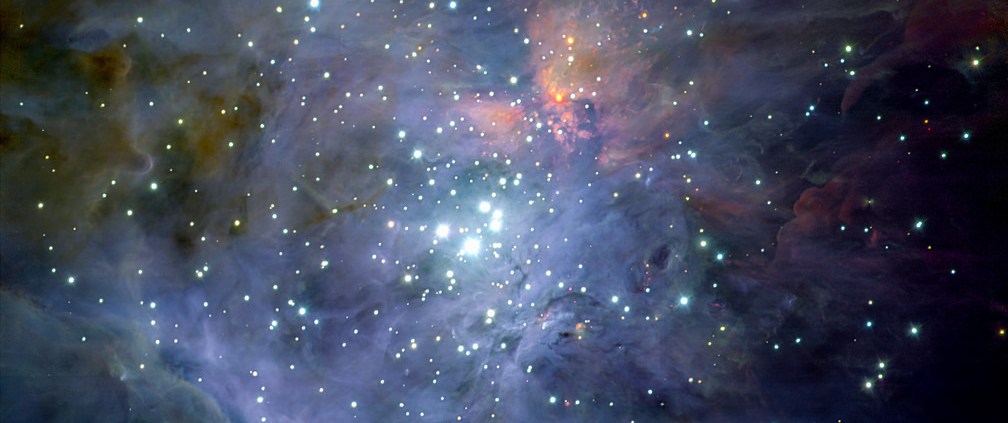


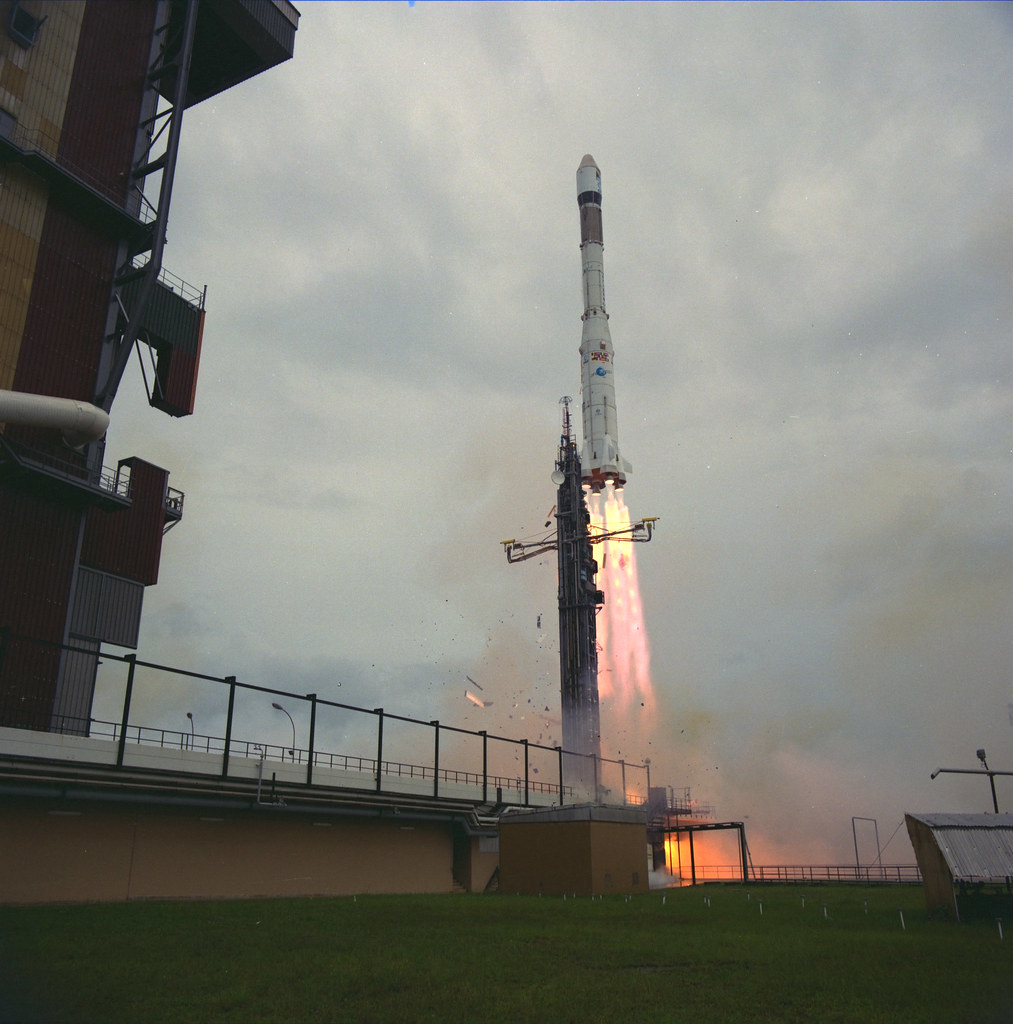



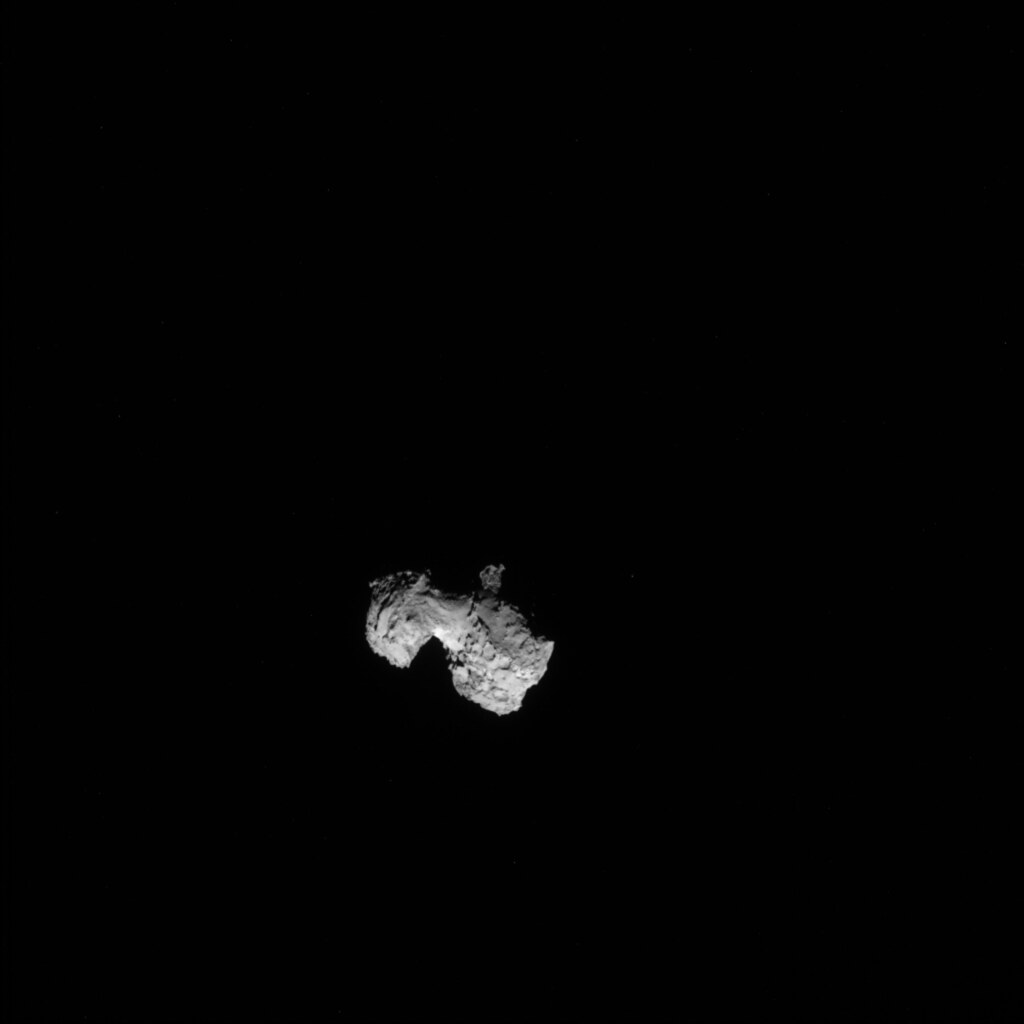



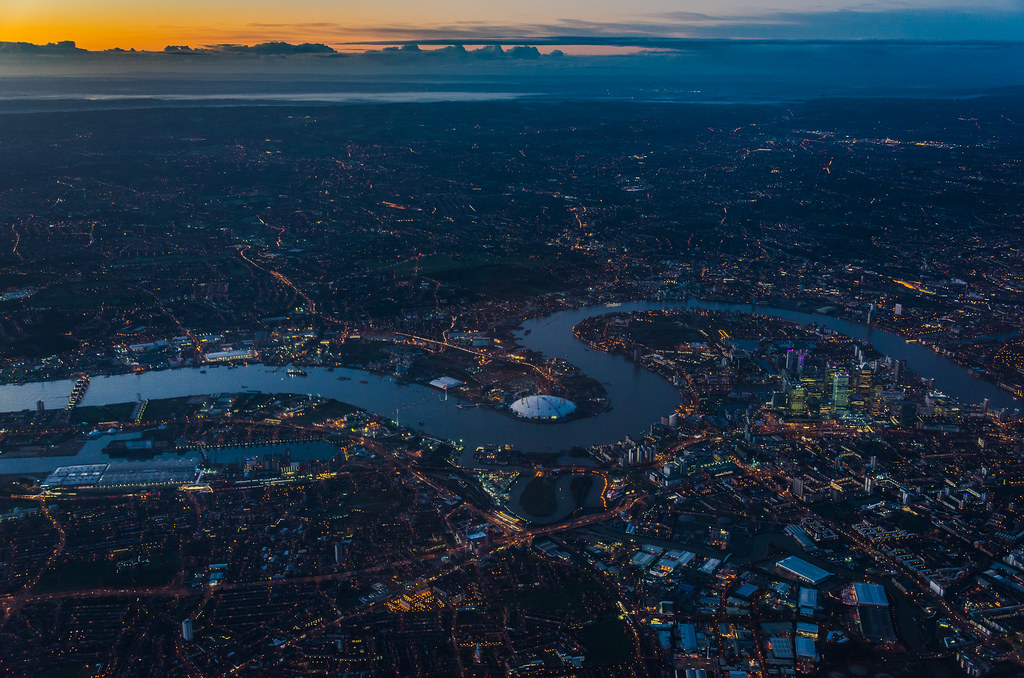
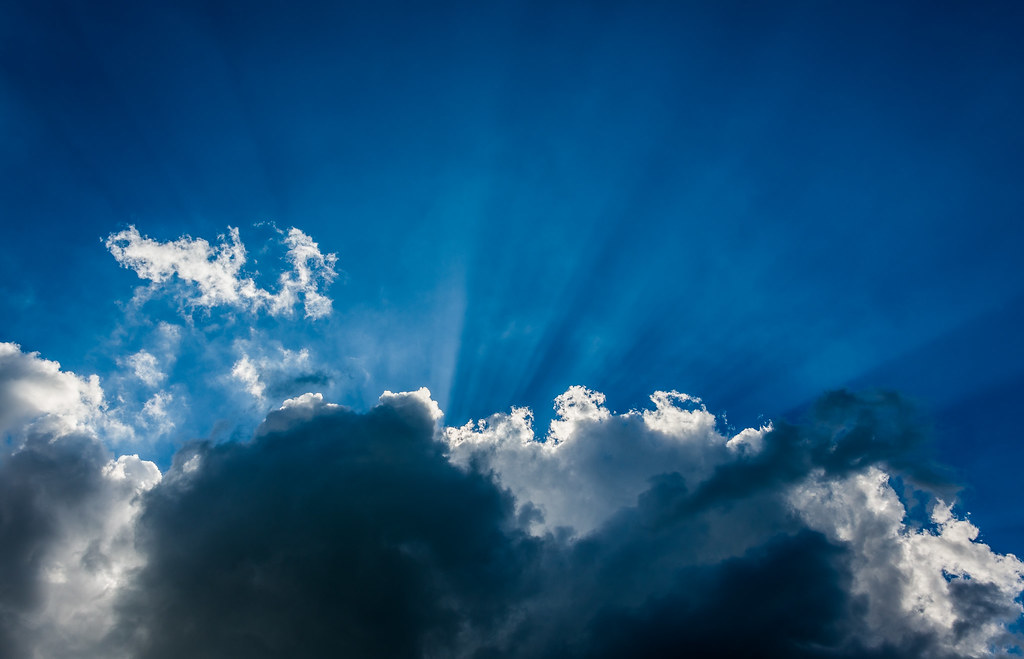

![The mists of Avalon [Explored 2014-02-17]](https://live.staticflickr.com/3817/12572908033_57b0555df9_b.jpg)

